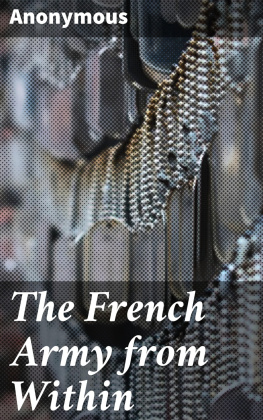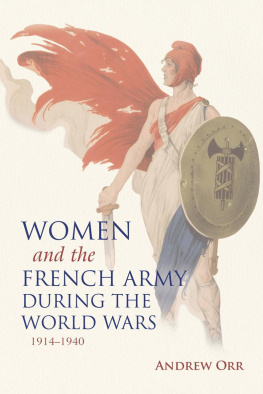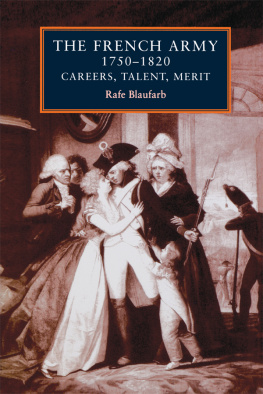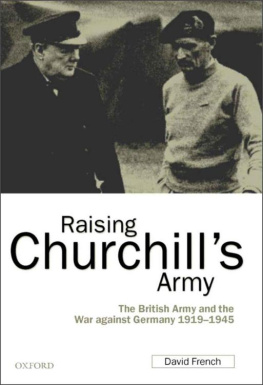THE FRENCH ARMY
FROM WITHIN
BY
"EX-TROOPER"
NEW YORK
GEORGE H. DORAN COMPANY
Copyright, 1914
By GEORGE H. DORAN COMPANY
CONTENTS
| page |
| The Constitution of the French Army | 7 |
| The French Soldier at Home | 18 |
| The Higher Ranks | 27 |
| Infantry | 44 |
| Off Duty | 51 |
| Cavalry | 60 |
| Artillery | 74 |
| In Camp and on the March | 85 |
| Manuvres | 104 |
| With the Cavalry Scouts | 119 |
| Internal Economy | 133 |
| Some Incidentals | 144 |
| The Great Garrison Towns of France | 156 |
| Some Effects. Active Service | 171 |
CHAPTER I
THE CONSTITUTION OF THE FRENCH ARMY
Before proceeding to the consideration of life as lived in the French Army, it would be well to have a clear understanding of the constitution of the Army of France, the parts of which it is composed, and the conditions under which it is organised and controlled. The British Army is a growth of years, and even of centuries, but with the changes of government that France has undergone since 1815 the constitution of the Army has undergone radical changes, and the French Army of to-day dates back only to 1871that is, as far as form and composition are in question.
One of the principles under which the present Republic of France is constituted is that "every citizen is a soldier." This principle has been more and more enforced with the growth and consolidation of the Republic since 1870, and successive laws passed with reference to the Army have been framed with ever-increasing recognition of the need for military efficiency. By the first law with regard to the constitution of the Army, that of July 27th, 1872, every young man, at the age of twenty, so long as he was physically fit, owed to his country five years of active service, five years in the Territorial Army of France, and six years in what was known as the Territorial reserve. On this law the constitution and organisation of the Army were first based.
The law of July 15th, 1889, reduced the period of service to three years in the active Army, but the principle remained the same. A further modification in the length of service was brought about by the law of 1905, which reduced the period of service with the active Army to two years, and abolished certain classes of citizens who were excused from military service for various reasons. Up to the passing of this law, bread-winners of a family had been exempt, but by it they were called on to serve, while the state pensioned their dependents during their period of service; the "voluntariat," consisting of men who paid a certain amount to the state in order to serve for a period of one year only, was abolished"every citizen a soldier" was made more of a reality than ever, for the nation realised that it must keep pace with the neighbour on the east, who was steadily increasing its military resources.
From the age of twenty to that of forty-five, every Frenchman physically capable of military service is a soldier. Each commune complies yearly a list of its young men who have attained the age of twenty during the preceding twelve months. All these young men are examined by the conseil de rvision cantonale, a revising body of military and civilian officials, by whom the men not physically fit are at once rejected, and men who may possibly attain to the standard of fitness required are put back for examination after a sufficient interval has elapsed to admit of their development in height, weight, or other requirement in which they are deficient. Five feet and half an inch is the minimum standard of height, though men of exceptional physical quality are passed into the infantry below this height.
The loi des cadres of 1907 supplemented the law of 1905 without materially changing it. At the present time about 200,000 men are enrolled every year, this number including the men who have been put back from previous examination by the revising council. The active Army of France thus consists of about 535,000 men, together with an approximate total of 55,000 men serving in Algeria and 20,000 men serving in Tunis. The gendarmerie and Republican guard add on another 25,000, and the colonial troops serving in the French colonies amount to a total of about 60,000. This last number is steadily increasing by means of the enrolment of natives of the French colonies in Africa.
These numbers concern the Army on a peace footing. In case of a national emergency the total war strength of the French Army is calculated at 4,800,000. Of these 1,350,000 comprise the first line troops made up of the active Army and younger classes of the reserve, who would constitute the first field armies to engage the enemy on an outbreak of war. The remainder of the total of nearly 5 millions would be called up as required for garrison purposes and to strengthen the ranks of the field army.
The citizen is still expected to give twenty-five years of service to his country; of these, twoor rather three, under the law passed by the action of the war ministry of M. Viviani just before the outbreak of the present continental waryears are expected to be spent in the active Army, and another eleven in the reserve of the active Army. During this second period of eleven years men are recalled to the coloursthat is, to service with the active Armyfor periods of a month at a time. At the conclusion of this first thirteen years of service, men pass automatically to the Territorial Army, which is supposed to serve for the purposes of home defence only. Service in the Territorial Army lasts six years, after which the soldier passes to six years in the reserve of the Territorial Army. After this the French citizen is exempt from any further military obligation.
Registered at the age of twenty, the French citizen is called to the colours on the first of October following his registration, and passes from the active Army two years later on September 30th. In old days, when the period of service in the active Army was for five years, the French Army was an unpopular institution, but the shortening of service together with the knowledge, possessed by the nation as a whole, that the need for every citizen soldier would eventually rise through the action of Germany, have combined to render the Army not only an important item in national life, but a popular one. There used to be grousers and bad characters by the score, but now they are rarely found.
In time of peace the active Army of France is so organised as to form the skeleton on which to build the war forces of the Republic. The system is one of twenty permanent Army Corps based as follows: the first at Lille, the second at Amiens, the third at Rouen, the fourth at Le Mans, the fifth at Orleans, the sixth at Chlons-sur-Marne, the seventh at Besanon, the eighth at Bourges, the ninth at Tours, the tenth at Rennes, the eleventh at Nantes, the twelfth at Limoges, the thirteenth at Clermont-Ferrand, the fourteenth at Lyons, the fifteenth at Marseilles, the sixteenth at Montpellier, the seventeenth at Toulouse, the eighteenth at Bordeaux, the nineteenth at Algiers, and the twentieth at Nancy.
The strength of an Army Corps is made up of two divisions of infantry, a brigade of cavalry, a brigade of horse and field artillery, and one "squadron of train," the last named including the non-combatants of the Army Corps. Exceptions are the Sixth Army Corps with head-quarters at Chlons, the seventh at Besanon, and the nineteenth at Algiers; of these the first mentioned two contain three divisions of infantry instead of two, while the Algerian Corps has four divisions, one of which is detached for duty in Tunis.

















